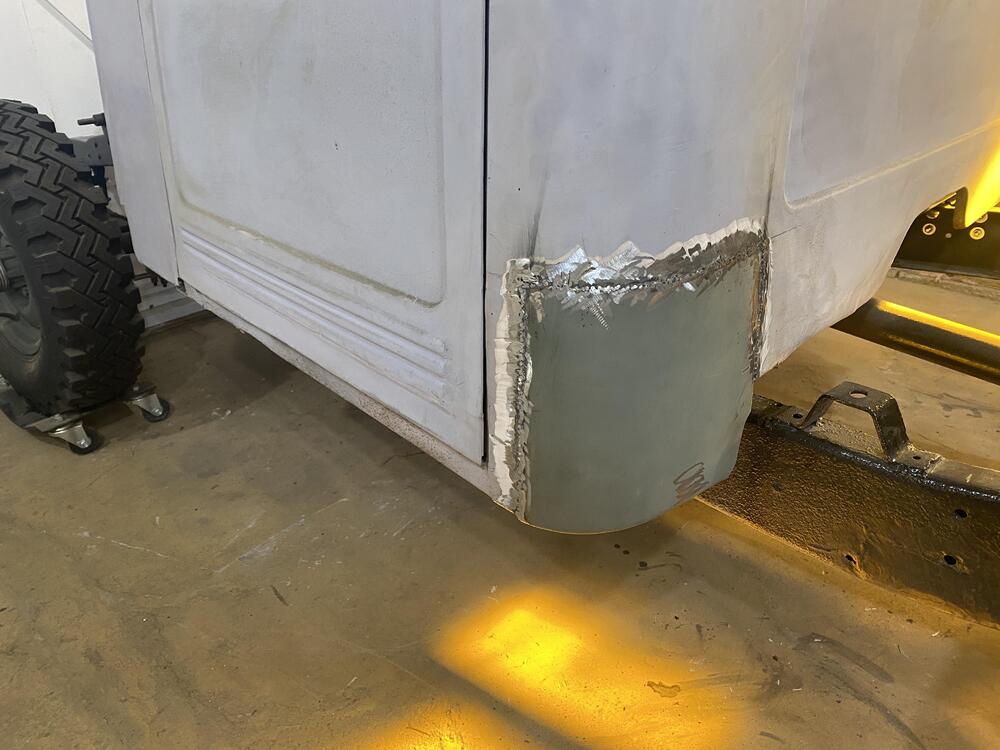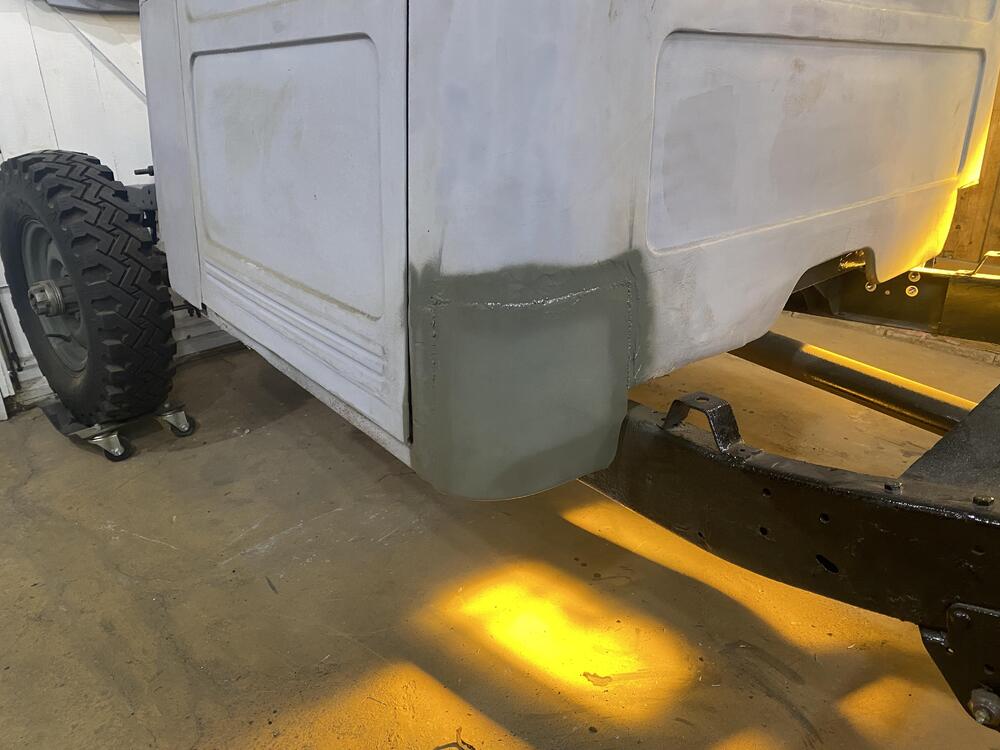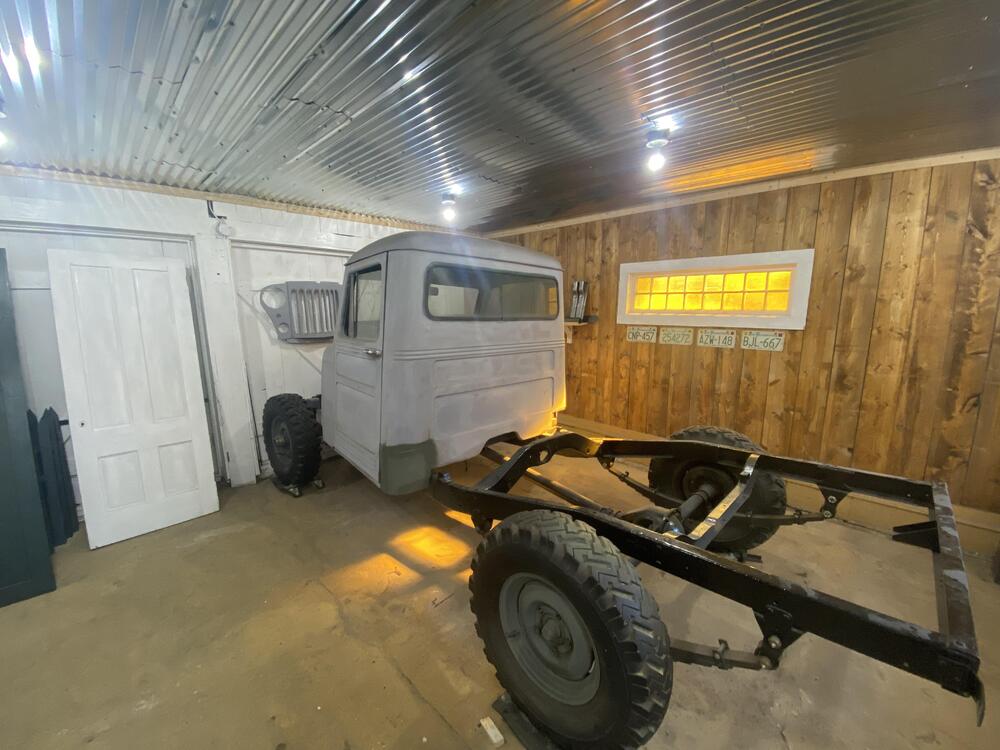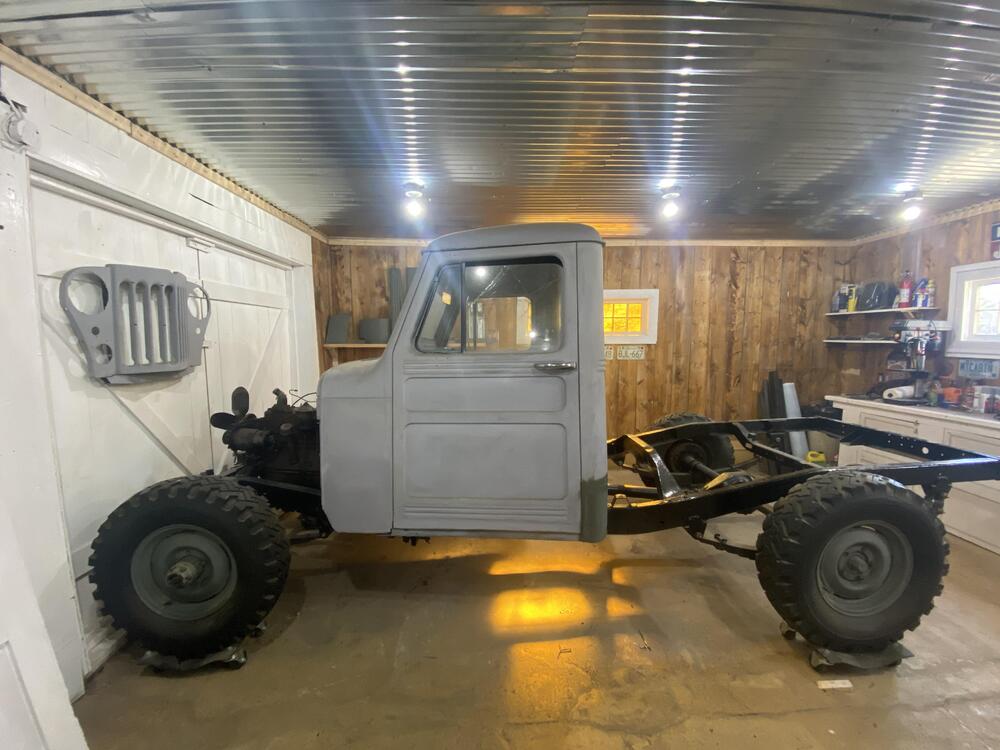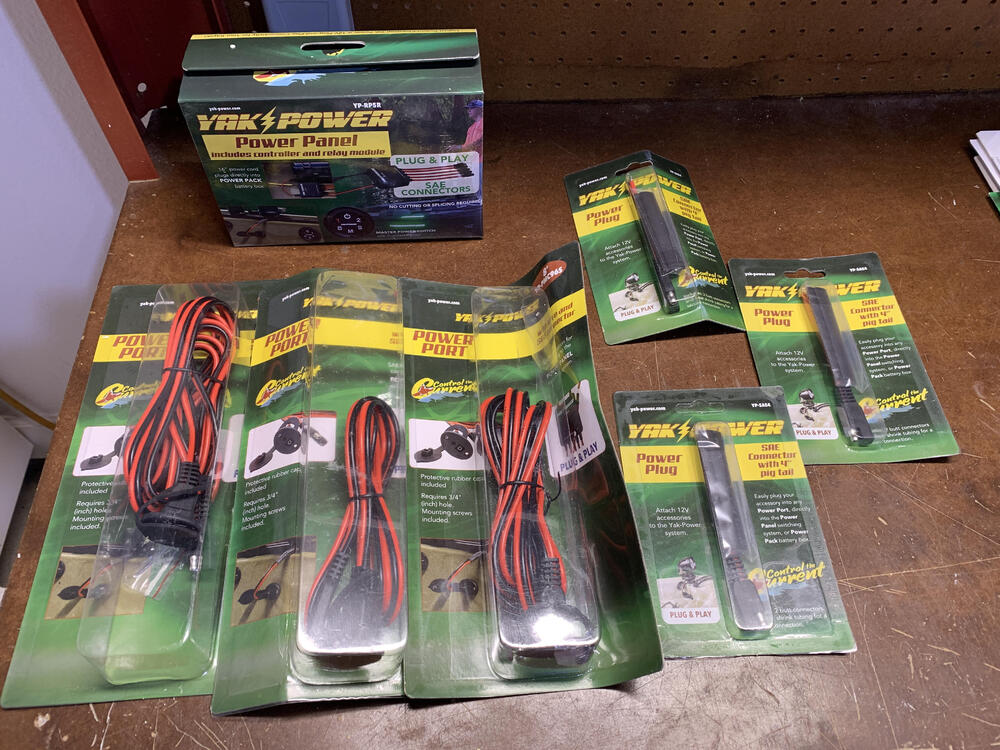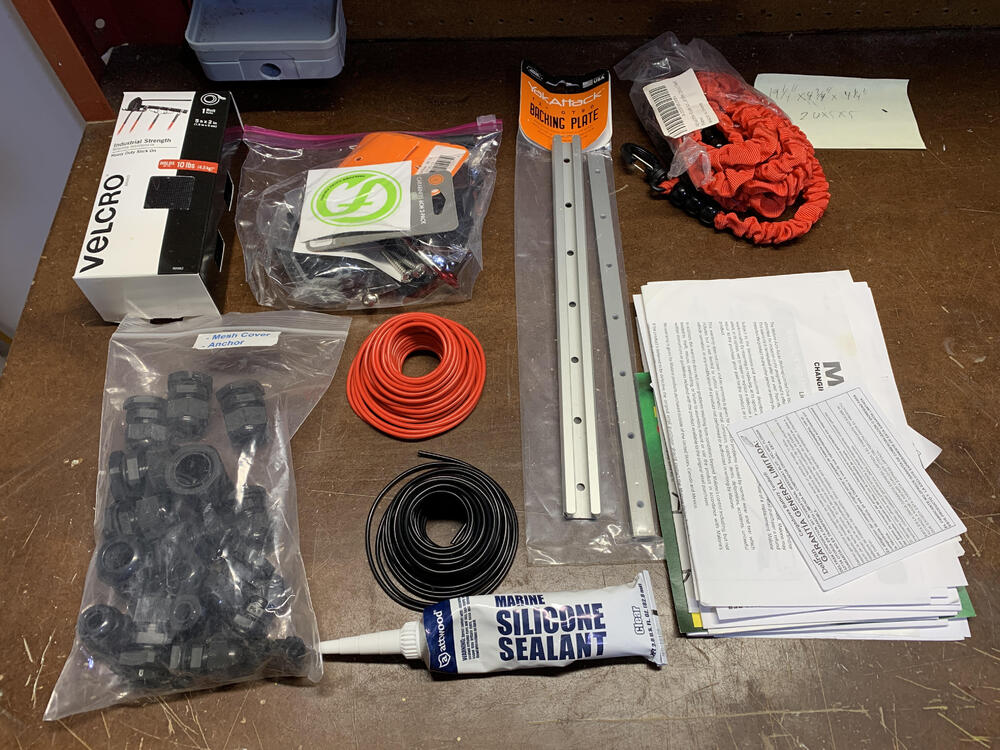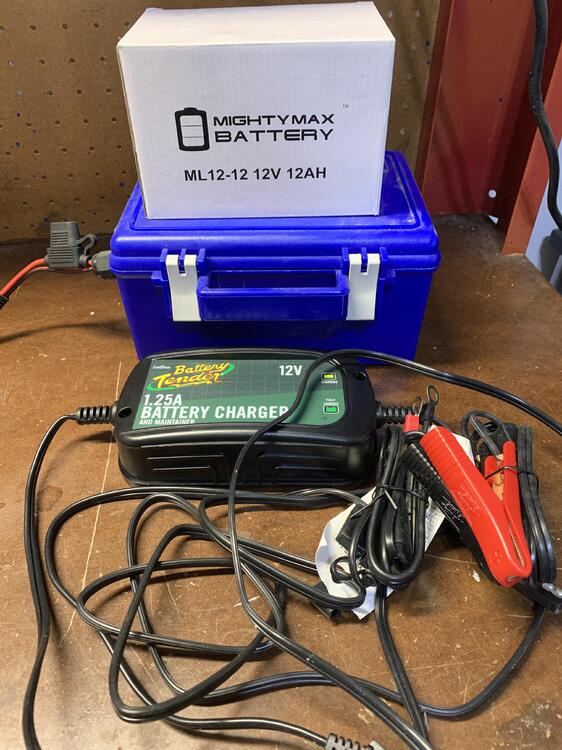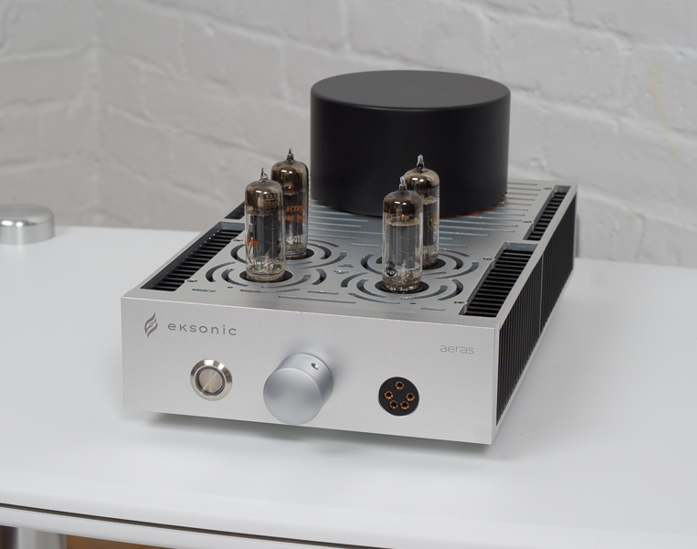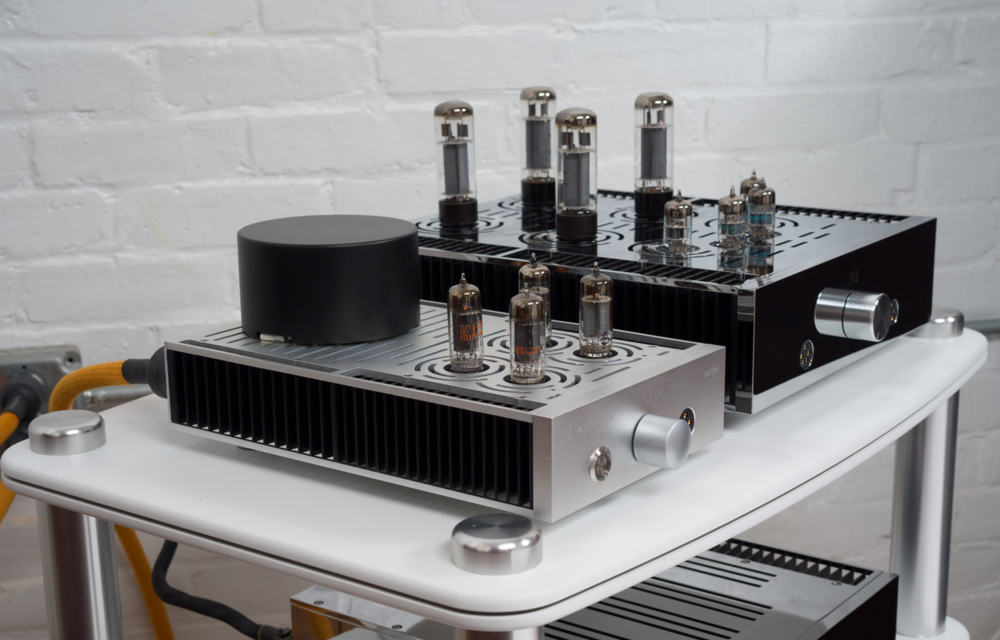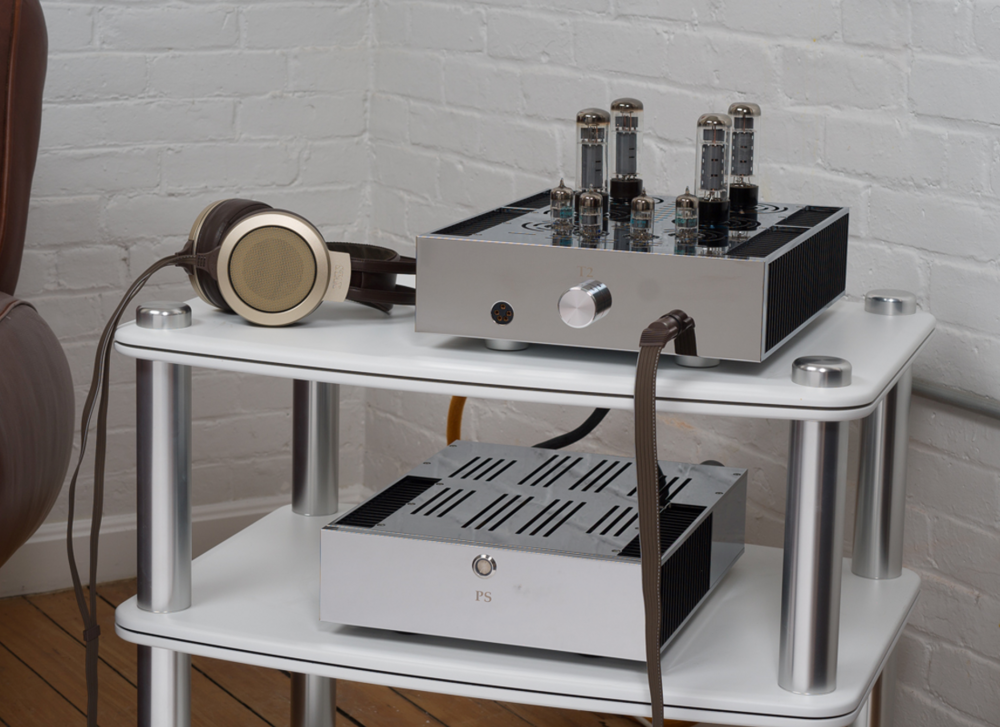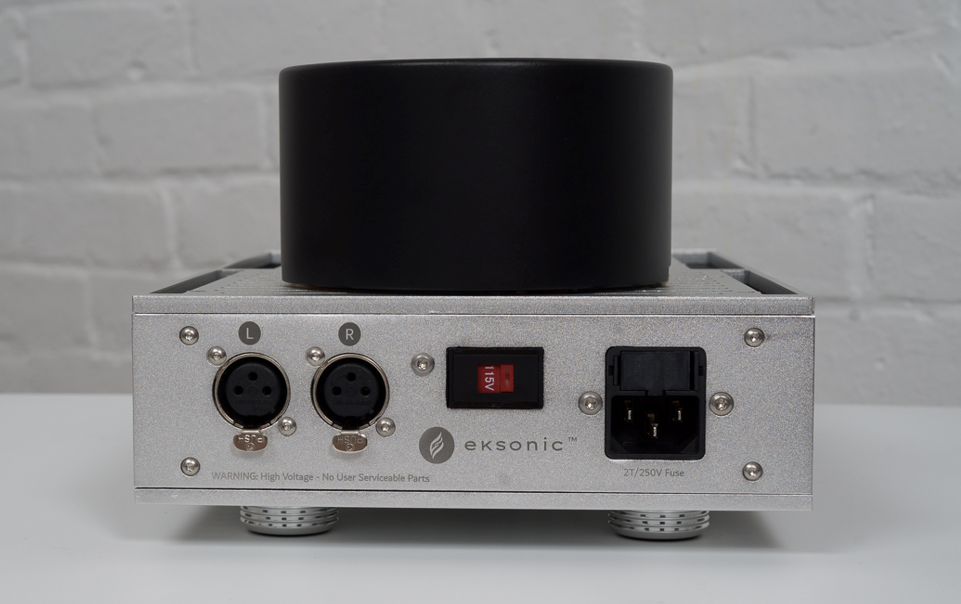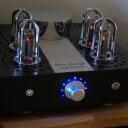Leaderboard
Popular Content
Showing content with the highest reputation on 05/01/2022 in all areas
-
Got one of the cab corner repair panels welded into my father’s ’62 Willys project. As the saying goes, “a grinder and paint makes me the welder I ain’t.” Lower cowl panel in front of the door will be next, then the rocker, and finally lower door repairs. Then lather, rinse and repeat on the other side.4 points
-
3 points
-
I'm listening to it right now, there's the permanent link for those who couldn't catch it live Hiromi was great. Linda May Han Oh is the epitome of cool in this video. Thanks for sharing this, Dusty.3 points
-
I believe the drivers are made from the skived foreskins of newborn cherubs.3 points
-
3 points
-
Dusty does not hate jazz. Happy (belated) International Jazz Day, fans of the genre! I'm listening to this right now: My girl, Hiromi, will be on there later.3 points
-
I just made the most delicious Stroganoff I ever made in my entire life, and I am pretty sure it's ~50% plant based: Not plant-based: 1 lb. beef Plant-based: grilled onions (grilled to Maillard Reaction/partially caramelized perfection!) grilled mushrooms Sesame oil sesame seeds, both black and white chives oregano thyme?...maybe parsley, don't remember freshly ground black peppercorns freshly ground white peppercorns freshly ground pink peppercorns mushroom seasoning vegan Worcestershire vegetarian oyster mushroom sauce almond flour dairy-free sour cream garlic2 points
-
Picked up a gift certificate at a local spa for my wife for Mother's Day. I wanted to give the monetary equivalent of three 50-minute massages ($87 each). The person getting the GC for me asked her co-worker what 3 times the price was, and before she could even pull out the calculator, I told her the amount. They both stared at me in awe, the second one double-checked my "work" and proclaimed I was right. they spent the next few minutes completing the card, and talking about how good I was with math. Scary.... They certainly LOOKED lovely.... 😂2 points
-
I am afraid don't have any experience of the T1s, or ecc99. Constant current is going to help the T1S. My guess would be that the high amp psu is better but in the forum people have reported considerable sound quality upgrades moving from resistor load to CC so the T1s with CC would probably be better than the Antares. T1 with CC vs Centauri (centauri is two 6sn7 per channel so more current potential and runs high voltages too) so more difficult to predict a winner. (some of the other forum members like spritzer have massive amounts of experience and would almost certainly be able to provide more solid info than I can from guesswork). some of the choice is going to be down to what you want the amp for... do you want something pre made and plug and play, or do you want to modify an existing T1s or do you want to have a go at building something fairly simple from scratch, plus it depends on your budget.1 point
-
I have not tried the Antares, but I did build an alpha Centauri... which was my first even stax amp build. All of the high-amp designs are similar in that they use resistors for the anode load rather than a constant current source and have relatively limited voltage swings. The high voltage power supplies are ok - they don't use a precision voltage reference like the golden reference series but they are better than the supplies found in most(all?) of staxes offerings and they have very good short circuit protection and robustness. The headphones bias is regulated (unlike most/(all?) of staxes offerings) and correctly has a ~5Meg ohm current limit resistor and is the correct 580Voltage too. Overall I would say the designs are competent but certainly not for state of the art. I did find a few errors in the schematic and gerbers for the Centauri but the designer was very helpful and I got the amp working with minimal pcb hacks. My issue with the centauri and antares is that the 6sn7 does not have a lot of current drive or voltage swing compared to the EL34 which is favoured in Kevnis value designs and coupled with a resistor network instead of a constant current source you lose even more drive so its going to struggle with hard to drive headphones like the sr007a... looking at Antares its a single value version of the centauri with lower voltages, so less drive than the centauri. Front end looks very similar, if not identical to the Centauri. I found the centauri to the better than the Stax srm006mk2 - more drive, better bass and dynamics but still nothing close to a blue hawaii, mini T2 or a T2. looking at the specs its got a fairly wide frequency response with not a lot of low frequency cut off - which is typical for dc coupled amps. Distortion is high for 300V swing - but that's to be expected given the low drive voltages and a single 5sn7 per channel. So if you want a relatively robust and simple to build starter project the Antares might be an option. If you want a replacement for a srm006 it might be better given the better power supply. If you want high end sound on a budget you are not going to get it from this amp.1 point
-
1 point
-
It is quite odd. I've never heard cloud 7, only cloud 9. The interwebs says cloud 9 became the more popular saying in the 80's, and I can certainly confirm that is complete crap. I never heard cloud 7 in the 60's, 70's, 80's, 90's or anytime after. It pays to be old and call people on their shit. I think it's just their 17th nervous breakdown.1 point
-
1 point
-
1 point
-
1 point
-
Just watching someone struggle to count back change today boggles my mind.1 point
-
For any fans of The Wire (or just great television), the limited series We Own This City (HBO) by Justin Fenton, George Pelecanos, and yep, David Simon, has a really strong pilot. Second episode hits in a couple days.1 point
-
1 point
-
I don't know what Martin thinks but Michael thinks freestanding on the PCB will be fine 😉1 point
-
I've been watching this kids videos for a few years now. I'm constantly amazed at not only his abilities at such a young age, but also his sense of design and creativity. But he took it to a level I truly marvel at in this project.1 point
-
1 point
-
1 point
-
Kevin can confirm but I am pretty sure you'll be fine - the current draw is very minimal like a few 10mA IIRC. Unless you are dropping some unusually high voltage through the GRLV there is not much heat to dissipate for the MJW21193/21194.1 point
-
$11k? So it's only 1/5th as good as the Hifiman Shangri-La? Please. What kind of plebs is this even for. I will take headphones that are 5 times as good as this, k thanks bye. It's twice as good as any Stax though... lol. The best Stax is what, less than $6k? Take that, Stax mafia.1 point
-
1 point
-
1. I know this is a personal preference thing but I do not care for their chosen aesthetic. 2. Straight to cloud 7... What the? I think they meant cloud 9 but it still would be a bizarre statement to make about a headphone. The internets do have some references to cloud 7 but whatever. 3. I'm really hoping Justin didn't write this ad copy.1 point
-
I watched season 1 when it came out. Not bad, nor great. I'd watch S2. Sunday finished Severance first and only season so far. Hated the cliffhanger ending, so left wishing for a S2.1 point
-
We’re launching a new company – Eksonic – along with our new amplifier called Aeras. Launching an audio company is something I’ve had in the back of my head for many years and I’m proud to be able to bring a passion to market. I've been building my own version of the DIY T2 for quite some time now and have long hoped to capture the spirit of the beast in a smaller single chassis design that's more accessible to many. We think we've accomplished that with the Aeras. Aeras is the result of endless hours of circuit design and analysis, brainstorming and many iterations of prototyping and testing. Our initial users have had great things to say about this new amp. We’re going to be launching the company formally at the NYC CanJam later this month. We’ll bring our DIY T2 along with the Aeras so people can hear them side by side. I hope to see some of you at the launch1 point
-
After several years layoff I have built a KGSShv Carbon which uses boards I had in and 4 Cree sicfets from several years back (luckily). The power supply is KGSShv v8 and the amps Carbon v6. It has been one of the easiest builds because of a different way of making the cases which I have described in Making diy cases, https://www.head-case.org/forums/topic/18892-making-diy-cases/ It is set for 400v supplies and 17mA output stage currents. It does not get particularly hot in a 20o C room, the heatsinks run a max of 40o at the centre. The power supply pass transistors are bolted to the bottom of the case and the case runs pleasantly warm to the touch. The size is 335 W x 314 D x 155 H inc feet. Weight 8.5Kg. (13in x 12.4in x 6.1in, 18.8lb.)1 point
-
I've found the culprit. A tiny solder blob which seems to have landed out of nowhere was shorting two solder points in the CCS module's PCB. Removed it, resoldered the module to the unit's PCB... and presto! Left-channel voltages back to normal! Phew! Rebiasing with the stock tubes took a couple of hours (3-4 rebiasing sessions with about one hour in between to wait for the tubes to drift). I'll wait a couple of months to see if it's worth it to start tube rolling. In the meantime... Currently testing my SR-007A with the newly recapped and CCS-modded SRM-T1S. Amazing! It seems a straitjacket was removed from the cans! The CCS mod really makes a difference.1 point
-
OK, got all the replacement caps, safety resistors and a nice CCS mod circuit - what I'm lacking now is time to open the energizer and change the components... Also just got an additional incentive to recap and mod my SRM-T1S - managed to get a fine used Omega SR-007A (serial number SZ2-1636) in addition to my Lambda Signature SR-407. Currently burning in the newly acquired cans, but already amazed at how different the 007A and the 407 sound from each other. The most obvious differences to me are the noticeably stronger bass and somewhat depressed upper midrange of the 007A as compared to the 407. Resolution, instrument separation and imaging are clearly superior on the 007A (I didn't think that was possible), and the soundstage is wider (probably partly due to the thicker earpads). However, the aforementioned relative "darkness" in the mids and a bit of excessive "blast" in the bass (both to an extent depending on the recording) make the 407 sound more natural to my ears (personally, I'm not really a bass buff), at least when both are paired with my yet unmodded SRM-T1S, but 80% of the time the 007A is actually more pleasant to listen to (the 407 seems to be less forgiving with respect to less than ideal recordings). And yes, I do need a bit more of volume on the 007A - I find myself pushing the volume to 10-11 o'clock on the 007A and to 9-10 o'clock on the 407. Comfort-wise, the 007A is light-years ahead of the 407 - the latter's headband assembly doesn't have the ratcheted height adjustment of higher-end Lambdas and cannot keep my head's fit for long, which is really annoying. Another problem I have with using the 407 for longer periods of time is that it squeezes my head a bit too hard. (update - June 22nd, 2021) In view of the aforementioned issues, I've replaced the original headband assembly of my 407 with the one from the L700 Mk II. I was afraid that the color mismatch would make the 407 look weird, but it actually looks quite nice in my opinion. The new assembly is sturdier (thanks to a large extent to the new metal driver holders) and keeps the height adjustment where I set it as it should, but it still presses my head a bit too hard for me to keep using it for longer periods, even though it's better than the original assembly in that respect as well. As for the 007A, once I figured out the proper earpad angle for my head, I simply forget it's there. Can't wait to hear how the 007A will sound after the mod on the SRM-T1S. Update (June 22nd, 2021): should be able to do the recap and mod of my SRM-T1S by the end of July. In the mean time, I decided to try spritzer's port mod on my 007A. My initial impression matches what others reported - the port mod evens out the response, the bass now sounds a bit more natural and (more importantly) that depressed upper midrange which was my main gripe with the 007A seems to be gone. Another effect is that I seem to get a slightly higher volume in good recordings. I guess sealing the port slightly increases the efficiency. However, the modded 007A seems to have become less tolerant with subpar recordings (especially ones with at least a fair amount of dynamic compression), becoming closer to the 407 in that respect. This leads me to conclude that the port aimed not only at eliminating the "Stax fart" from the original Mk I (yes, my 007A is "farty" now), but also at making the 007A more agreeable to the majority of modern recordings when used with "lesser" energizers like the (stock) SRM-T1S, which is clearly better matched to the 407. This will probably change after the mod, since the stock SRM-T1S sort of underpowers the 007A.1 point
-
Another improvement I've seen people around (e.g. spritzer) suggest on the SRM-T1 is to replace the RCA input jacks and input wiring, but judging from pictures it seems that there is some improvements made by Stax on that area from the T1 to the T1S - the RCA jacks definitely look beefier and the input wiring looks nice enough (actually better than the output wiring)... but again, that's only a visual impression. I wonder whether it's sonically worth the trouble to make these upgrades... Anyhow, I'm using the XLR balanced inputs in my SRM-T1S for now, so this makes upgrading the RCA input jacks moot (but possibly not the input wiring). I've also seen some people (e.g. spritzer again) recommend to change the tubes from 6CG7/6FQ7 to the modern ECC99 from the Slovakian brand JJ (apparently the only one who makes these), used instead of the 6CG7/6FQ7's in the SRM-600 variant of the SRM-T1 circuit, but that requires rewiring the tube sockets somewhat and changing the R20 resistors in series with the TVR2 bias trimpots from 2.2kOhm to 1kOhm, 1/2W in order to achieve proper bias for the tubes, as JimL suggested here: https://www.head-fi.org/threads/stax-srm-t1-repair-re-cap-mod.796058/post-14276400 Rewiring the tube sockets for the ECC99's can be done as e.g. in these instructions (in German, sorry): http://blog.prof-x.de/2019/03/02/stax-vacuum-tube-driver-teil-4-ecc99-tube-swap/ The author combines JimL's CCS mod with the ECC99 mod but he changes the CCS trimpots from 100 to 200 Ohms in order to achieve more easily the required 6mA plate current required to run the ECC99's in SRM-T1(S)'s CCS-modded circuit. The claimed improvement over the CCS mod with stock tubes is an extended frequency response at higher volumes, but given that the ECC99 mod is not easily reversible, should one regret doing it (particularly due to the pair of PCB trail cuts in the rewiring process), I wonder how much one gains with it compared with the CCS mod alone (possibly also after a tube replacement / rolling with some nice Japanese short plate NOS tubes such as Toshiba, Matsushita, Hitachi or NEC). Another thing that worries me about the ECC99 mod is this tube's longevity, which seems to be not so great in certain setups: https://www.diyaudio.com/forums/tubes-valves/205364-lifespan-jj-ecc99-tubes.html JimL claimed in the AudioXpress article where he published his CCS mod that SRM-T1(S)'s circuit is rather conservative with the stock tubes, despite Kevin Gilmore's criticism that the 6CG7/6FQ7 tube being driven somewhat above its rated voltage by the SRM-T1 circuit also causes loss of high-frequency response at higher volumes, but how much strain does the SRM-T1 circuit put on the ECC99? More precisely, how is ECC99's lifespan on the SRM-T1(S), particularly with the CCS mod? Edit (May 12th, 2021): Another tube modification I have seen being suggested (e.g. by spritzer, once more) is to replace the 6CG7/6FQ7 tubes with the USSR/Russia-made 6N6PI (which is said to differ from the 6N6P tube only by a so-called "(im)pulse" operation - no idea what that means) instead of the ECC99. The case for this is that the 6N6P(I) has the same pin layout as the 6CG7/6FQ7's apart from pin 9, which is connected to a screen separating both triode sections in the 6N6P(I) which does not exist in the 6CG7/6FQ7. This screen seems to be disconnected from the remainder of the internals of the tube, which is consistent with spritzer's claim that the 6N6P(I) has the same pin layout as the 6CG7/6FQ7, period, unlike the ECC99 for which pin 9 is connected to a section of the heater. Therefore, tube rolling the SRM-T1S with the 6N6P(I) does not require rewiring the tube sockets as we need to do with the ECC99. However, according to spritzer in the link above, we still need to replace the 33K/2W plate (anode) resistors with 30K/2W ones since the heater current on the 6N6P(I) is 50% larger (900 mA) than on the 6CG7/6FQ7 (600 mA). Interestingly, it is the same resistor substitution used for the ECC99 (which has a 800 mA heater current)... If one were not to apply the CCS mod as well. Otherwise, one just looses all the plate resistors altogether, which are replaced by the CCS's. If I understand correctly, given that both the 6N6P(I) and the ECC99 require the same plate resistor substitution, the former must use the same CCS current as the latter, as derived from Ohm's law and the 320V rail voltage connected to the anodes (320V / (2 x 33kOhm) = about 4.8-4.9mA per plate goes to 320V / (2 x 30kOhm) = about 5.3mA per plate). Is this correct? What I fail to understand is which is the possible audio improvement one may get from tube rolling the SRM-T1S with the 6N6P(I) instead of the ECC99, if any. Again, if I correctly understood Kevin Gilmore's criticism of the SRM-T1(S)'s design, the main problem with using 6CG7/6FQ7 tubes in this circuit is that they end up being driven by a plate voltage too close to its maximum spec (330V, formerly rated 300V), which causes loss of high-frequency response at higher volumes despite the fact that the tube itself is not so strained since it is only being driven at 320V x 9.8mA = 3.1W = 55% of its maximum plate power dissipation (5.7W on both plates together, according to more recent datasheets). Given that the loss of performance caused by this mild voltage overdrive is a lesser effect than the loss of output current in the plate resistor array (solved by the CCS mod), the ECC99 nonetheless solves the former problem since its maximum plate voltage is 400V. The plate dissipation power with either the ECC99 or the 6N6P(I) is 320V x 10.6mA = 3.4W, whereas the maximum plate dissipation power on the ECC99 is stated in its current datasheet from JJ as 3.5W - per section? It does not say... Older datasheets set it at 5W, some forums reported 8W on both plates but that info is most likely outdated. Update - June 8th, 2021: I've contacted JJ directly to clarify this, and according to them the maximum plate dissipation power of the ECC99 tube is indeed 3.5W per section and 7W on both plates together. That puts the plate dissipation power of the ECC99 in the SRM-T1S at about half of its maximum, which should make for great tube lifespan just like the 6CG7/6FQ7. That kind of answers my second question above. I conclude that the only technical disadvantage of using ECC99's in the SRM-T1S is having to rewire the tube sockets in a not easily reversible (if at all) way, so one is basically stuck with ECC99 tubes if one decides to follow that route. The question of whether the ensuing sonic improvement (if any) is worth it remains, of course. The 6N6P(I), on the other hand, has about the same, slightly insufficient (300V) maximum plate voltage as the 6CG7/6FQ7 and therefore is potentially subject to the same voltage overdrive problem as the 6CG7/6FQ7. Tube longevity should be ok, though, since the 6N6P(I)'s maximum plate dissipation power is 4W in the 6N6PI variant (couldn't figure out either whether this figure is for a single section or both) and 8W for both plates in the 6N6P variant. Why should I expect the 6N6P(I) to perform sonically better in the SRM-T1S circuit than the 6CG7/6FQ7, let alone the ECC99? The only advantages I see in the 6N6P(I) for the CCS-modded circuit are: Tube rolling with the 6N6P(I) instead of the ECC99 is (at least more easily) reversible (the only other operation needed besides exchanging tubes and rebiasing should be adjusting the plate current in the CCS's trimpots), Possibly a (slightly) longer lifespan than the ECC99 due to the more conservative plate dissipation power (up to a rated service life of 500 hours for the 6N6PI variant, against the 2000-hour figure of the 6N6P variant - no idea why there is such a difference), and 6N6P(I) tubes are usually cheaper and easier to find than adequate 6CG7/6FQ7's, especially in matched pairs for easier rebiasing, none of which really being related to audio quality. Am I missing something? I suppose much (all?) of the above information has already been discussed at length in the (loooong) Stax threads in this and the Head-Fi forums along several years, but I've found it difficult to gather all of it in an up-to-date form, so I apologize in advance for the redundancies on my behalf in this thread and appreciate the community's patience with them. Again, it seems convenient (at least to me) to have everything I need in one place.1 point
-
No particular brand recommendations. It is safe to install a larger capacitance as long as the voltage and size specifications are maintained. Larger capacitance is similar to slightly stabilizing the power supply voltages and allows the circuit to work a bit better. The amp should be off long enough to discharge the power supply caps, which you can check by measuring the residual voltages on the power supply caps - as long as there are only a few volts left you are fine. Note that because of variations in the AC line voltage and heat drift, there is going to be some change in the output voltage on the order of a few volts over a few minutes time. The circuit is pretty stable and designed for long tube life, so checking the bias a couple times a year is probably adequate. The CCS mod is fine as published, the only changes are additions of 5.1 megohm safety resistors to the bias outputs after the last bias capacitor, which was left out of the original article.1 point
-
As electrolytic caps age they have a gradual decrease in capacitance and an increase in series resistance, but it is unlikely that you can tell that by listening. At some point as it approaches its end of life, the risk of the capacitor shorting out will increase, but again until it happens I don't know of any way to determine exactly when it will happen. That's why I recommend just replacing them all as routine maintenance. Kind of like replacing the oil in your car at specified maintenance intervals. If you don't do this, you are risking a catastrophic failure if the capacitor shorts out. Better to just put in new caps - it's cheap insurance. The parts cost for replacing all the electrolytic caps is less than $50 and you don't have to worry about it again for 10-20 years. So, stop f**king around and just do it. If you don't know how to solder get an electronics technician to do it. You shouldn't have to rebias the tubes unless the caps were already going bad and the power supply voltages were already going south. As far as the tubes go, yes, when they start to wear out, you will need to turn up the volume. Another way to tell is that you will need to adjust the bias to keep the output voltage near zero. The tubes you showed are examples of the short plate. The photo does show the CCS mod. The metal spacers in the photo are available from Mouser, as are all the electronic parts including the electrolytic caps and MOSFETs. The heatsink was bought on eBay for less than $10 and was cut down to a size that would fit the space available. Note that if you do the CCS mod you likely will have to rebias the tubes - there are instructions on how to do this on the internet.1 point
-
For the electrolytic caps, if they are original they should be replaced as they are nearing, if not at the end, of their life. The most important things are the voltage rating needs to be the same or higher than the originals, and the size and lead spacing has to be similar so they will fit in the space. The brand is not really important as long as the electrical and physical parameters are similar. In some cases (i.e. the four big power caps) you can find caps with higher capacity that will fit in the same space, which can be an upgrade. In terms of tube replacement, both Hirsch and spritzer have recommended Japanese short plate tubes as the "best" sounding. No idea how they compare with Gold Aero. You can recognize the short plates as they physically occupy slightly more than half of the glass envelope, as opposed to most 5CG7/6FQ7 tubes where the plate occupies most of the glass envelope. Also, if you are into DIY at all, a good modification is to replace the 8 plate output resistors (the pinkish banded round cylindrical things in front of the power transformer) with 4 constant current loads. This will more than double the effective output power by eliminating the signal current wastage in the output resistors, tighten the bass, extend the highs and lower distortion.1 point
-
Yup, pull it out and set it to 117V and it will work perfectly. Also, top tip... remove that 100V sticker and see what is underneath...1 point



